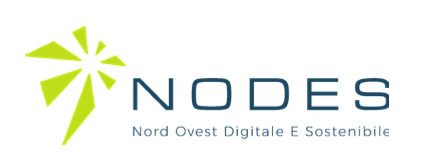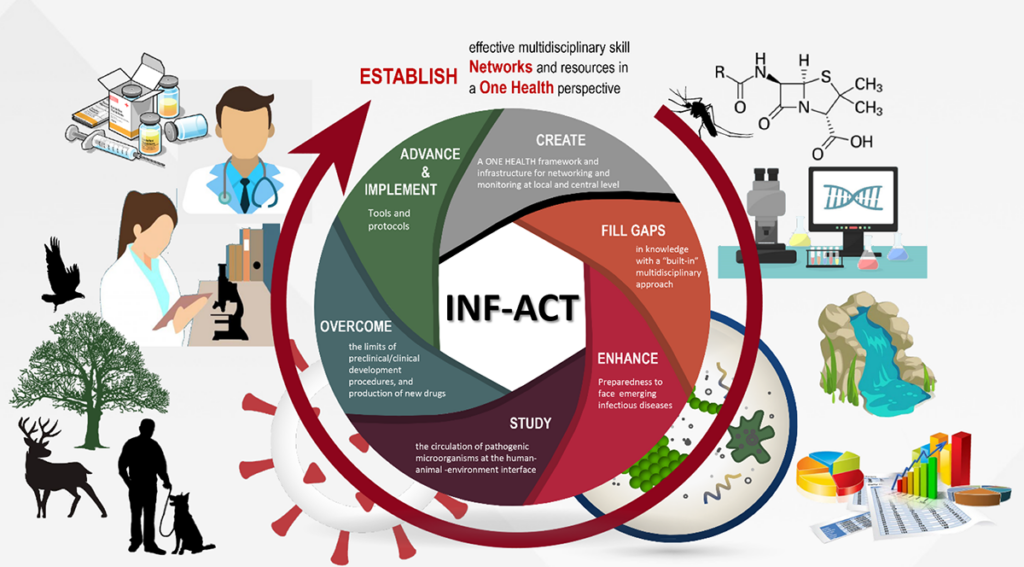During the last years our research group won three different fundings in three different field:
- Antimicrobial Resistance
- Agricultural waste and circular economy
- Development of new antibacterial agents
If you are interested in, you can find a brief description of the different projects hereunder.

PRIN: PROGETTI DI RICERCA DI RILEVANTE INTERESSE NAZIONALE – LIRA: LsrK as Innovative molecular target for quorum sensing interfering agents for fighting Resistance to Antimicrobials
There is an urgent need for new antibacterial agents to fight Antimicrobial Resistance (AMR), a growing threat with serious health and economic consequences. AMR accounts for almost 30% of superbugs-related deaths, and it is forecasted to become the first cause of death in 2050. A shift in paradigm for the development of new antibacterial agents is highly demanded by WHO, by searching for new targets and innovative antibacterial strategy and weapons. In this scenario, LIRA aims to discover and develop novel antibacterial agents acting through poorly explored mechanisms of action. An innovative strategy to deal with AMR is to interfere with bacterial quorum sensing (QS) signalling. As the QS is involved in the organization of bacteria in biofilm and in the development of bacterial resistance, QS inhibition could become a new promising antibacterial strategy to prevent the development of bacterial resistance and to repress the expression of several bacterial virulence factors that facilitate human infections. Because virulence factors are not essential for bacterial growth and survival, a QS-focused treatment would not generate selective pressure, and the arising of resistance strains. Accordingly, the LIRA concept is based on the exploitation of LsrK as a new target for the development of novel QS quenching drugs. LsrK is a bacterial kinase, expressed in both Gram+ and Gram- bacteria, that plays a pivotal role in triggering the QS cascade. Pilot medicinal chemistry studies performed so far support the rationale behind LIRA and pave the way to a more complete understanding of the role of the bacterial LsrK kinase inhibition in AI-2 mediated QS cascade and to the discovery of innovative non-antibiotic therapy. The ability of LIRA to surpass any current or in-development technological paradigm is summarized in the following highlights:
1. the developed novel drug candidates will divert from the actual bacterial targets exploited by the actual antibacterial drugs approved for humans;
2. they will not directly kill the bacteria by inhibiting vital targets, but they will attenuate their virulence by interfering with QS and biofilm assembling; as a result,
3. they will not promote AMR because they will interfere directly with the origin of the resistance development process;
4. they may be able to restore the efficacy of currently available antibacterial drugs against resistant bacterial strains (i.e., through their co-administration).
The ultimate objective of LIRA is to discover and patent novel LsrK kinase inhibitors with the favourable properties to be further advanced in the pre-clinical phase. We believe that such inhibitors may represent a new generation of antimicrobials with unprecedented modes of actions and complementary to the currently available antibacterial agents, which could allow us to fight the projected worldwide occurrences of superbugs infections.

Piano nazionale di ripresa e resilienza (PNRR)- NODES: Nord Ovest Digitale E Sostenibile
NODES (Nord-Ovest Digitale E Sostenibile – which is the Italian for “Digital and Sustainable North-Western Italy”) is an Innovation Ecosystem involving territories in Piemonte, Valle D’Aosta and the bordering provinces of Lombardia (Pavia, Como and Varese), represented by its innovation actors linked to the productive and research vocations that represent the excellence of the territories. NODES is organized into 7 spokes, each characterized by a specific focus under the umbrella of the digital and ecological transitions:
Particularly, our group will act in the Spoke 6, which actively fosters the sustainable development of agricultural territories by leveraging cutting-edge technologies such as sensing devices, advanced mapping systems, data collection, and processing methods. The Spoke is coordinated by the University of Pavia and involves collaboration with public research institutions and local entities. Together, they work towards the sustainable development of agricultural territories through the implementation of digital innovation systems.
In recent years, the interest in management of agricultural waste has remarkably increased due to the economic crisis and climate changes. According to the United Nations, among the concerns related to the global increase of the population there is the annual waste production, which will increase by 70% in the next 40 years. Moving toward both a more sustainable development and a circular economy is therefore one of the most relevant challenges of the next few years.
In this scenario, we will focus on one of the most diffused cultivation of our territory, namely Vitis vinifera. Wastes coming from vineyard include leaves, whose diversity is increasingly studied, and pruning wood, which determines the production of several thousands of tons of wastes. Vineyard wastes, enriched with high added value molecules, are a source of bioactive compounds. Therefore, they perfectly fit with the concepts of the circular economy. Our aim is to exploit waste extracts for different applications in agriculture, medicine, food, pharmaceutical, nutraceutical and cosmetic industries. Dialogue between Academia and Industry is essential for industrial implications and can lead to beneficial results.

Piano nazionale di ripresa e resilienza (PNRR)- NBFC: National Biodiversity Future Center
The National Biodiversity Future Center is the first of five national research center dedicated to the conservation, restoration, monitoring and valorization of Italian and Mediterranean biodiversity. Considering this big aim the work is divided into 8 different Spoke, each of one composed by different researchers and universities, focused on a different theme and divided again into different activities. Spoke 1 and 2 are focused on the observation, digitalization, protection and valorization of Italian coasts, spoke 3 and 4 are focused on the monitoring and protection of Italian wetlands, spoke 5 and 6 are focused on the urban restoration exploiting and studying urban biodiversity and on the valorization of biodiversity to obtain bioactive molecules or sustainable ecofriendly industrial processes and, at last, spoke 7 and 8 are focused on the managing of the entire project at national level and on the connection and digitalization of Italian museum, industries and universities.
In this big project our lab is focused on the Spoke 6-Activity 2: bioprospecting and bioactivity to valorize natural sources offered by Italian biodiversity, along with the University of Verona, the University of Milano Bicocca, the University of Napoli Federico II, the University of Palermo, the Humanitas research hostpital and the RI MED foundation. The attention is focused on the extraction of bioactive molecules, development of new nutraceutics, food additives to improve the nutritional and sensory profile of the products, drugs and cosmetics as well as the development of new extraction methods and synthesis procedures to obtain these resources from our national biodiversity.
In particular, our lab is collaborating tightly with the University of Verona that provides us with the extracts of some selected plants that are then screened with chemical and enzymatic assays to determine their biological activity as antiage, anti-tumor and neuroprotective agents. Specifically, to assess their potential use in the cosmetic field with the aim to fight skin ageing, skin spots formation and to improve skin elasticity we test the extract to evaluate their antioxidant and free radical scavenging activity, their inhibition potential against the Tyrosinase activity and their ability to stimulate the activity of the Collagenase. Moreover, to evaluate their potential neuroprotective capability and their possibility to be used as anti-cancer agents, we test again their ability to inhibit Tyrosinase and Proteasome, for the first, but also their ability to activate Proteasome and to inhibit Acetylcholinesterase activity, for the latter. Future steps of the work will include the scale up of the most promising extracts and fractionate them in order to identify new active metabolites.

Piano nazionale di ripresa e resilienza (PNRR)- INF-ACT Malattie infettive emergenti
